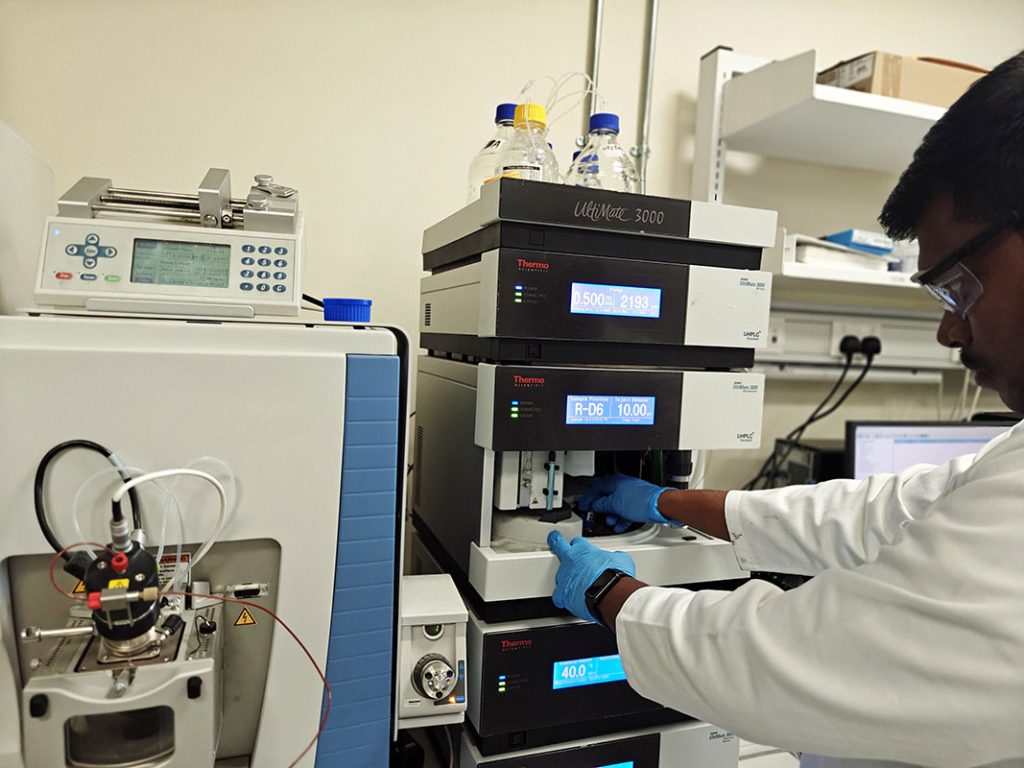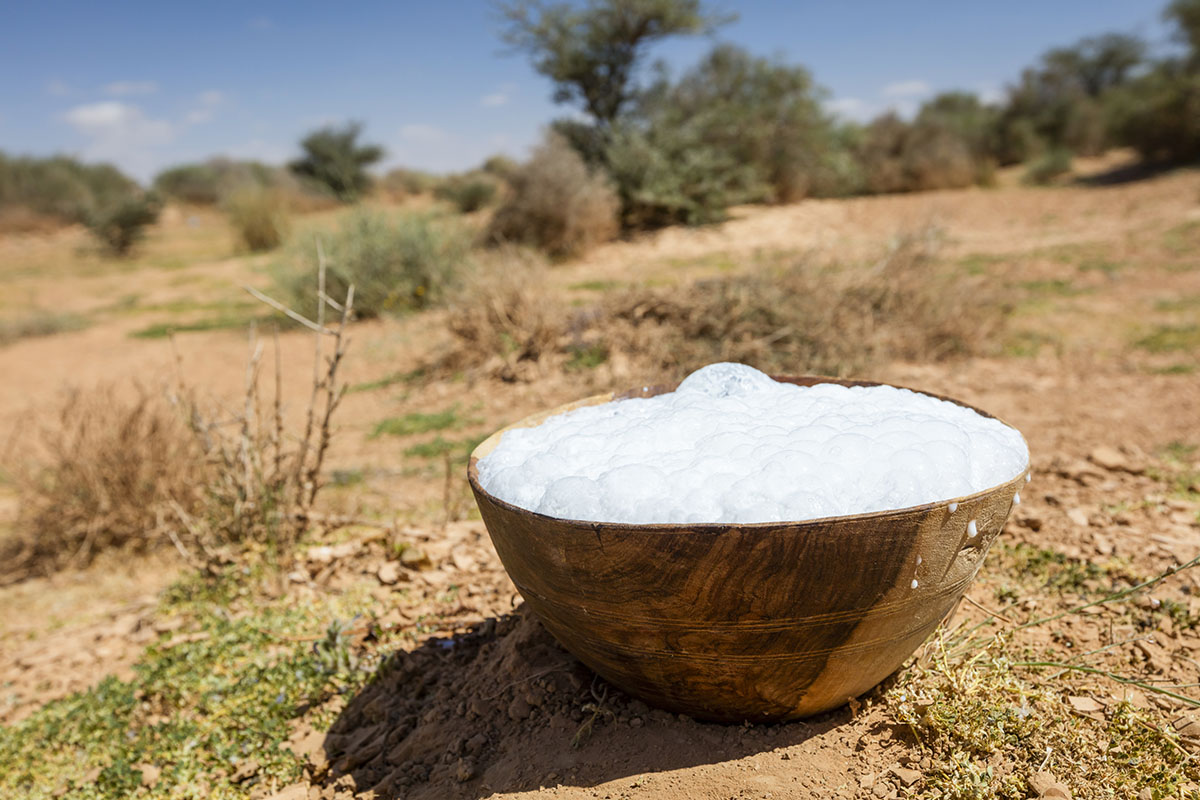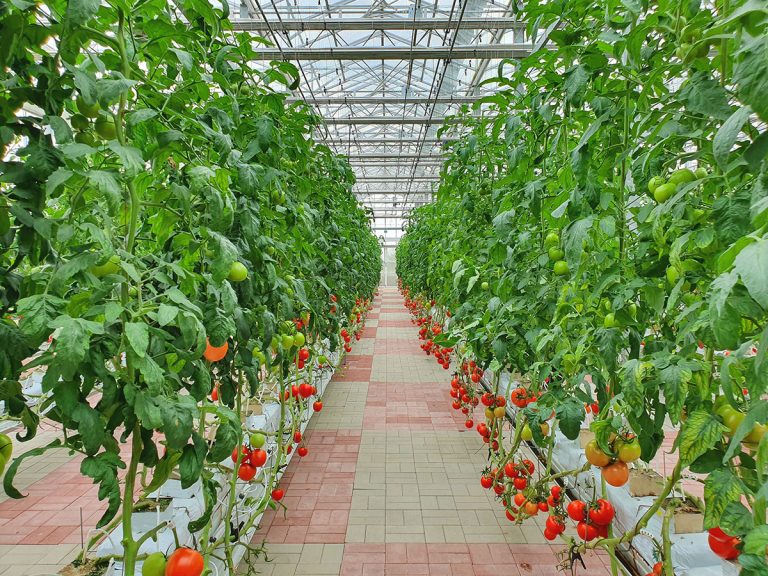Harnessing heritage and science for the UAE’s food future
From camel milk to dates, Khalifa University’s Food Security and Technology Center is redefining how the UAE transforms its local resources into global food solutions.
For centuries, camels have sustained desert communities, valued not just for transport and endurance, but for their milk, which was traditionally drunk fresh and rarely processed. Today, that same milk is being rediscovered as a nutritional powerhouse, particularly in the Gulf region, with potential to help manage diabetes, a condition affecting millions. Some regular consumers have reported reducing their medication use by as much as 30%.
Now, at Khalifa University’s Food Security and Technology Center (FSTC), camels are at the center of a nutrition revolution. Led by Professor Fawzi Banat, the center is taking this rich heritage and using science to secure the nation’s food future.
Banat and his team are producing cheeses, yogurts—even mozzarella. With production growing by around 6% annually, the FSTC’s immediate focus is meeting regional demand, but its ambitions extend much further. “We want these products on supermarket shelves globally,” says Mustapha Mbye, a postdoctoral fellow leading the dairy product research. “The short-term goal is the UAE and the Gulf; the long-term vision is export.”

Banat, a chemical engineering professor, has long devoted his career to two scarce resources—water and food. “I grew up in a region where both are limited, so I’ve always aimed to support sustainable growth in these fields,” he says. In the United Arab Emirates, food security is a national priority, elevated by an ambitious goal: to make the nation the top country in the world on the Food Security Index by 2051.
Khalifa University recently established the FSTC as a leading hub of excellence in food research and innovation. Its work spans sustainable agriculture, functional foods, waste utilization, and new processing technologies. But Banat frames them as threads in a single fabric. “Food technology is highly interdisciplinary,” he explains. “It brings together microbiology, biotechnology, engineering, and more. Our challenge is to create a culture where these disciplines collaborate seamlessly.”

From heritage to innovation
For Adiba Akram, a research associate in dairy science, innovation must go beyond functionality—it has to be enjoyable. Her proudest achievement so far has been the near-complete development of camel-milk mozzarella. “Camel milk is difficult to coagulate,” she explains. “But we’ve reached about 85% similarity in stretch and texture compared with bovine mozzarella, and we’re getting closer.” Using textural and sensory evaluations, her team ensures the products are ready not just for patents, but for palates.
Beyond dairy innovation, Banat’s group is turning to the UAE’s resilient desert herbs, which survive in the harshest desert conditions. One standout is Heliotropium bacciferum, Ramr, which has demonstrated anti-diabetic, anti-cancer, and even antivenom properties. Another, Herm (Zygophyllum fontanesii), shows strong anti-inflammatory effects.
Building on this knowledge, researchers are developing wound-healing dressings infused with these herbal extracts. “We are proud of our heritage,” Banat emphasizes. “We want to align it with modern science to deliver something valuable for future generations.”

Waste into wealth
If camels and herbs represent heritage, dates represent abundance. With around 40 million date palms, the UAE produces about a million tons of date seeds every year. From sustainable extraction to application in cosmetic and biomedical product formulations, the group is turning what used to be waste into valuable medical and nutritional resource.
Food security is a human issue.
Fawzi Banat
One research team is extracting oil from the seeds, rich in antioxidants, for use in foods and wound-healing products. Visiting researcher, Jennifer Osamede Airouyuwa, specializes in sustainable extraction, achieving yields up to 40% higher with green solvents than conventional methods. “We fortify foods like cheese and cookies with these extracts, and also use them to preserve seafood. They add value and reduce reliance on synthetic additives,” she says.
Postdoctoral researcher Touseef Ahmed Wani, explains that the most promising aspect of date-seed oil is that “its profile closely resembles high-value oils such as olive oil, making it a strong candidate for diverse applications.”
Other researchers are using date byproducts to fuel entirely new forms of dairy. Manideep Pabba, a PhD student, is culturing microorganisms that produce milk fats, essentially creating synthetic milk without cows. “By using date waste as feedstock, we reduce costs dramatically,” he says. Current production is about 10 grams of fat per liter, with targets of 40–50 grams—levels that make it commercially viable. “Considering milk naturally has 3–5 grams of fat per 100 milliliters, these numbers are promising.” Khalifa University supports commercialization by filing patents before publication and linking researchers with incubators and industry partners.
Postdoctoral researcher, Barathi Kannan Kalian, has fermented date seeds and pomace with selected herbs to create a feed additive that reduces E. coli by 99%. “We tested our formulation in the UAE’s hot climate, where commercial feed often shows fungal contamination,” he explains. “Ours contained no detectable mycotoxins. It offers antibacterial and antifungal protection, improving poultry health and productivity.”
Packaging is also part of the story. Jahirul Ahmed Mazumder, a postdoctoral researcher, has pioneered techniques that kill microbes in camel milk without damaging nutrients. He is also producing a thin film made by friendly bacteria from date waste, a biodegradable alternative to plastics.

Meanwhile, his colleague Arshied Manzoor embeds antioxidants from date seed phytochemicals into bio-films. “The idea is to give food its own shield,” he explains. “The films slowly release bioactive compounds, extending shelf life while being safer for the environment.”
Even traditional beverages are being reimagined. Janaki Senthil Murugan has created antioxidant-rich teas from date seeds, and is also studying the Ghaf tree (Prosopis cineraria), the UAE’s national tree, for its nutritional potential. “We constantly share ideas across disciplines,” she says. “Food chemistry, microbiology, engineering—we combine them all to create stronger products.”
Together, these efforts illustrate a single philosophy: that waste is not an end but a beginning. By transforming byproducts into oils, proteins, collagens, additives, and packaging, the center is redefining sustainability as both an economic and ecological imperative.
Cultivating tomorrow
Beyond the labs, a vertical farm rises—an indoor experiment in agriculture designed to withstand the desert’s searing heat. By controlling light, nutrients, and irrigation, researchers are helping local farmers grow vegetables under unimaginable conditions in open fields. “It’s sustainable and scalable,” Banat says. “We collaborate directly with farmers so they can apply our findings in their own operations.”
But perhaps the center’s most remarkable asset may not be its facilities or growing portfolio of patents—it’s the people behind the science. With more than 20 nationalities represented among faculty and students, FSTC embodies diversity. “Our biggest task is aligning people from so many disciplines and cultures,” Banat acknowledges. “But it is also our strength. Innovation happens at the intersections. Food security is a human issue. What we do here in the UAE can resonate across the world.”




